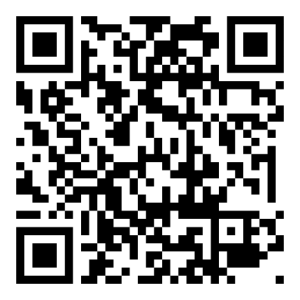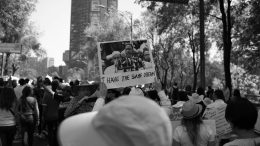Today’s most effective environmental activists — including Bill McKibben, Jane Fonda, and others — draw large crowds and inspire us. To accomplish this, they draw upon history’s most transformative leaders as a model for how to make our voices heard even in difficult situations.
Whether those activists chain themselves to trees or bulldozers, stand strong en masse at government buildings, block transport of fossil fuels or deadly chemicals, or peacefully interrupt privatization of protected lands, these leaders all employ strategies established by historical figures who challenged authority.
Protesting has a long, rich history that you should familiarize yourself with. After all, the United States itself was born out of protest. And protest may determine how we move forward.
Gandhi’s Passive Protests
Mahatma Gandhi’s passive protesting, also known as satyagraha, was a philosophy and practice of nonviolent resistance to injustice, love for one’s opponent, and a commitment to truth as the means to achieve social and political change.
Key aspects of satyagraha include:
-
- Nonviolent Resistance: Gandhi believed violence is weakness and that true strength exists in nonviolent action, such as boycotts, strikes, and civil disobedience.
- Self-Suffering: This is the willingness to suffer for one’s beliefs, to awaken the conscience of the oppressors and inspire them to change through hunger strikes and peaceful noncompliance/nonparticipation.
- Conversion, Not Coercion: Do not just defeat opponents but convert them to a cause through persuasion and by demonstrating the moral superiority; winning hearts and minds.
- Boycott Power: Organize widespread boycotts – vote with your wallet and reject unethical products, political actions, discriminatory laws and unscrupulous business models.
Gandhi’s philosophy of nonviolent resistance has been highly influential worldwide, inspiring civil rights movements and other social justice campaigns by Rev. Martin Luther King, Jr. and Nelson Mandela.
Do you fear protesting because it may disrupt your social, professional or political standing? Nelson Mandela tells us: “I learned that courage was not the absence of fear, but the triumph over it. The brave man is not he who does not feel afraid, but he who conquers that fear.”
King’s Lessons on Nonviolence
Martin Luther King Jr. was a central figure in the American Civil Rights movement, renowned for his leadership in peaceful protests. He advocated for nonviolent resistance to inspire social and political change. His approach emphasized challenging injustice without using violence. King’s nonviolent resistance, a strategic and morally sound approach, included sit-ins and boycotts, marches and demonstrations, civil disobedience, and an emphasis on love and reconciliation.
The King Center’s Six Principles of Nonviolence:
-
- Nonviolence is a way of life for courageous people.
- Nonviolence seeks to win friendship and understanding.
- Nonviolence seeks to defeat injustice or evil, not people.
- Nonviolence means that unearned suffering for a just cause can educate and transform.
- Nonviolence chooses love instead of hate.
- Nonviolence believes that the universe is on the side of justice.
In his 1964 Nobel lecture, King said: “Violence is immoral because it thrives on hatred rather than love…violence ends up defeating itself. It creates bitterness in the survivors and brutality in the destroyers.”
John Lewis reinforced this message for all who resist injustice, saying: “Before we went on any protest, whether it was sit-ins or the freedom rides or any march, we prepared ourselves, and we were disciplined. We were committed to the way of peace — the way of non-violence — the way of love — the way of life as the way of living.” Sociological and political scientific research confirms that non-violent protests are more effective than violent ones. Peaceful protests are much more effective.
When authorities repress protests, it can strengthen peaceful movements. When protesters are violent, it often creates news coverage that is more sympathetic to the opposition, whose chosen media outlets will edit the most inflammatory clips of non-peaceful participants in your protest and create video loops and memes that will play repeatedly in the social media landscape and worse, go viral. This drowns out your protest message and its importance, meaning, and intent.
Protesting in Private
If you feel shy about joining a protest, or maybe you have physical limitations that may hinder your participation, you can often make everyday resistance by “voting with your wallet,” i.e. researching your grocery and goods purchases, your credit card corporations, the companies and stores you frequent as a consumer.
You can also spend time contacting your city, state, local and federal representatives if you find them lacking in leadership for the environment and human rights.
Next Time: This series will continue with a look at how, after you’ve gotten some effective protesting experience under your belt, YOU can organize a protest.
Are you active in protests this summer? Tell us about it! Share your ideas, inspirations, aspirations, and advice to newcomers in active movements and protests. Send your comments, suggestions, questions, or even brief essays to [email protected].
Sources and Resources:
“The New Science of Social Change: A Modern Handbook for Activists” by Lisa Mueller
“Agenda Seeding: How 1960s Black Protests Moved Elites, Public Opinion and Voting” by Omar Wasow
“Non-Violent Resistance (Satyagraha)” by M. K. Gandhi
Summer of Change: New Books to Inspire Environmental Action
The Activist Handbook and other sources below provide practical guides and resources so you can plan your demonstration successfully.
Indivisible and No Kings offer training and education on protesting safely and effectively, as well as new and upcoming protest events.
The Human Rights Campaign: Tips for Preparedness, Peaceful Protesting, and Safety
ACLU Guide: How to Protest Safely and Responsibly
Amnesty International Protest Guide
Wired: How to Protest Safely: What to Bring, What to Do, and What to Avoid



